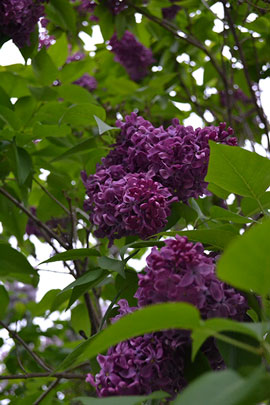No wonder Thomas Jefferson raved about the lilac. Few plants deliver the sweet scent of this cold-tough, old-fashioned “queen of shrubs.”
You can also eat the petals (blossoms are pungent with a slight lemony flair) as well as sniff them, but don’t expect fruits, even though the lilac is in the olive family.

Native to eastern Europe, the lilac developed its dense, cone-shaped purple, lavender, pink and white flowers in Colonial France. Puritan settlers brought young plants from England, and lilacs quickly became an American favorite.
Though 10- to 12-foot-tall French lilacs are still popular, gardeners today lean to the small-yard-friendly 5- to 6-foot-tall dwarf types, such as Korean lilac ‘Palabin,’ Manchurian lilac ‘Miss Kim,’ and the hybrid Tinkerbelle®. Lesser known but durable and fragrant is the white-blooming, 25-foot-tall Japanese tree lilac.
Worth the wait
Lilacs drive “patience-challenged” gardeners crazy. They can take three to four years to bloom for the first time and sometimes go downhill in blooming later.

One reason is lack of sunlight. Lilacs like full sun. When blooms fizzle over time, sometimes it’s because trees growing nearby are turning a full-sun location into an increasingly shady one.
A second explanation is ill-timed pruning. Lilacs flower on buds that form the fall before, so if you prune lilacs in fall, winter or early spring, you’ll cut off the buds that would’ve bloomed.
A third issue is aging wood. Lilacs bloom best on young wood, so if you prune off one-third of the oldest shoots to the ground each year, you’ll encourage a steady supply of replacement shoots from around the base. The time to do this is right after the plant blooms. Also helpful: snipping flowers after they brown.
Avoiding trouble
A common lilac woe is powdery mildew, a fungal disease that causes a white coating on the leaves. It’s usually not fatal but makes lilacs look worn later in the season.
Improving air flow by pruning those older shoots helps. Otherwise, stop it with several sprays of a fungicide labeled for powdery mildew. Or go with dwarf types, which generally resist this disease.
by George Weigel